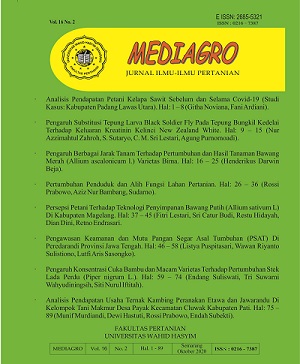Main Article Content
Abstract
Population growth will be followed by the fulfillment of a residence or settlement so that it will trigger a land conversion. Land conversion or land conversion is defined as a change in the function of part or all of the land area from its original function (as planned) to other functions that have negative impacts (problems) on the environment and the potential of the land itself. According to BPS (2001) in a period of 7 years (1993-2000) there was a reduction in Indonesian agricultural land by 710,000 ha or 56.167 ha per year. As the population in Indonesia increases, it is followed by a decrease in the area of agricultural land due to the process of land conversion to meet residential needs. Land conversion that is carried out directly or indirectly, can be temporary or permanent, can be in the form of gradual conversion with a sporadic pattern, systematic conversion with an “enclave†pattern, land conversion in response to population growth, conversion caused by social problems, conversion without burden and Agricultural adaptation conversion Land conversion is influenced by external factors including economic, socio-cultural, increasing population and regulations, while internal factors such as less productive land and economic pressure from farmers. Conversion of agricultural land has a positive impact in the form of increased investment in the non-agricultural sector but has a negative impact on threatening national food security and decreasing environmental quality. Keyword: Population Growth, Land, Conversion
Article Details
References
- Prabowo, R., Bambang. A. N., Sudarno., & Nurlette,
- A. R (2020). Identification and conversion rate
- of rice field in Semarang year 2000-2019. E3S
- Web of Conferences, 202, 02002 (2020) ICENIS
References
Prabowo, R., Bambang. A. N., Sudarno., & Nurlette,
A. R (2020). Identification and conversion rate
of rice field in Semarang year 2000-2019. E3S
Web of Conferences, 202, 02002 (2020) ICENIS

